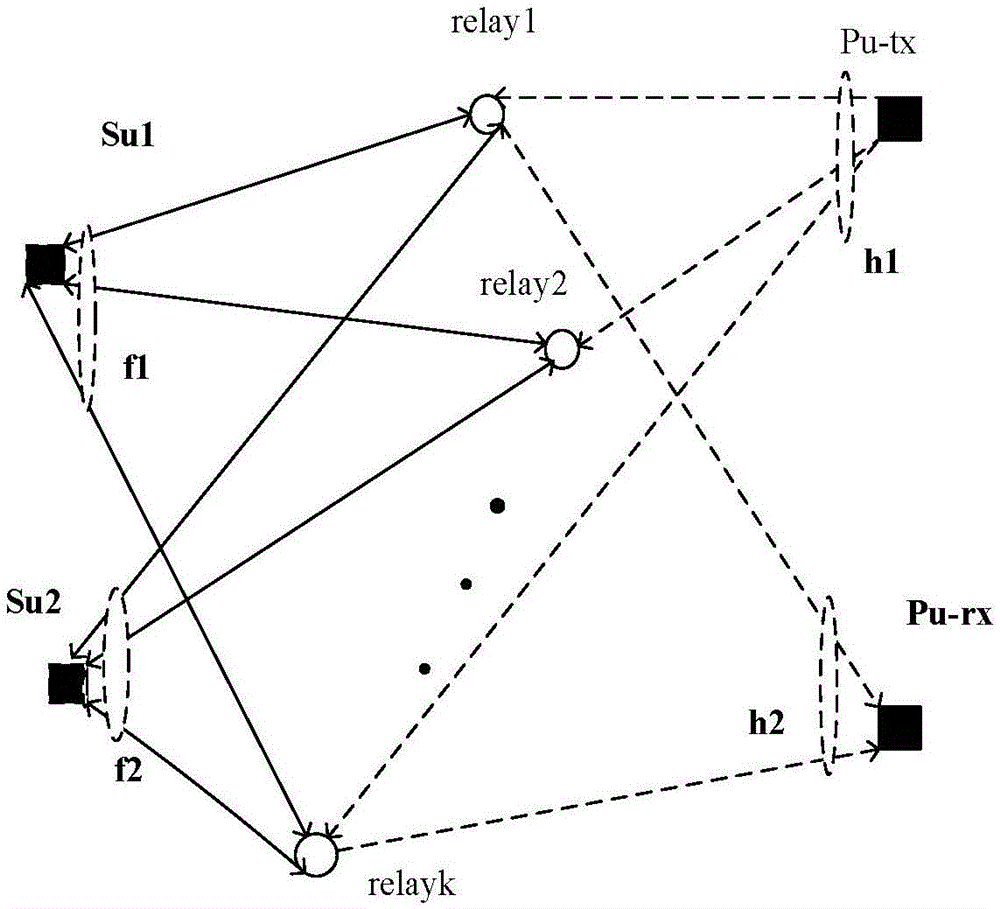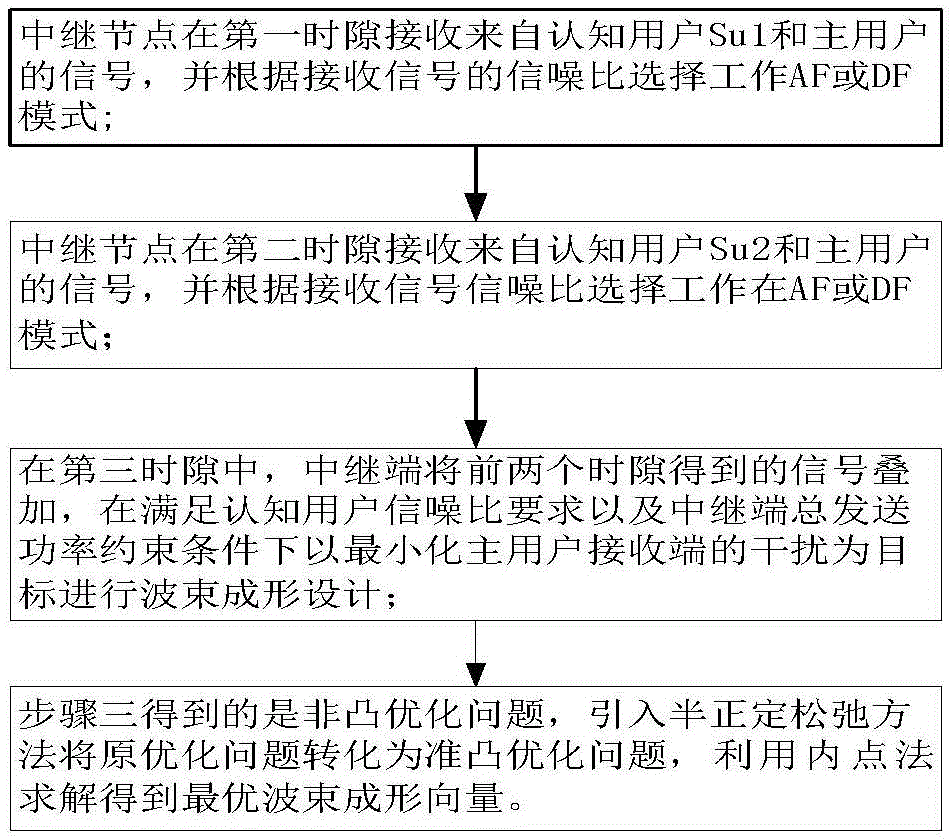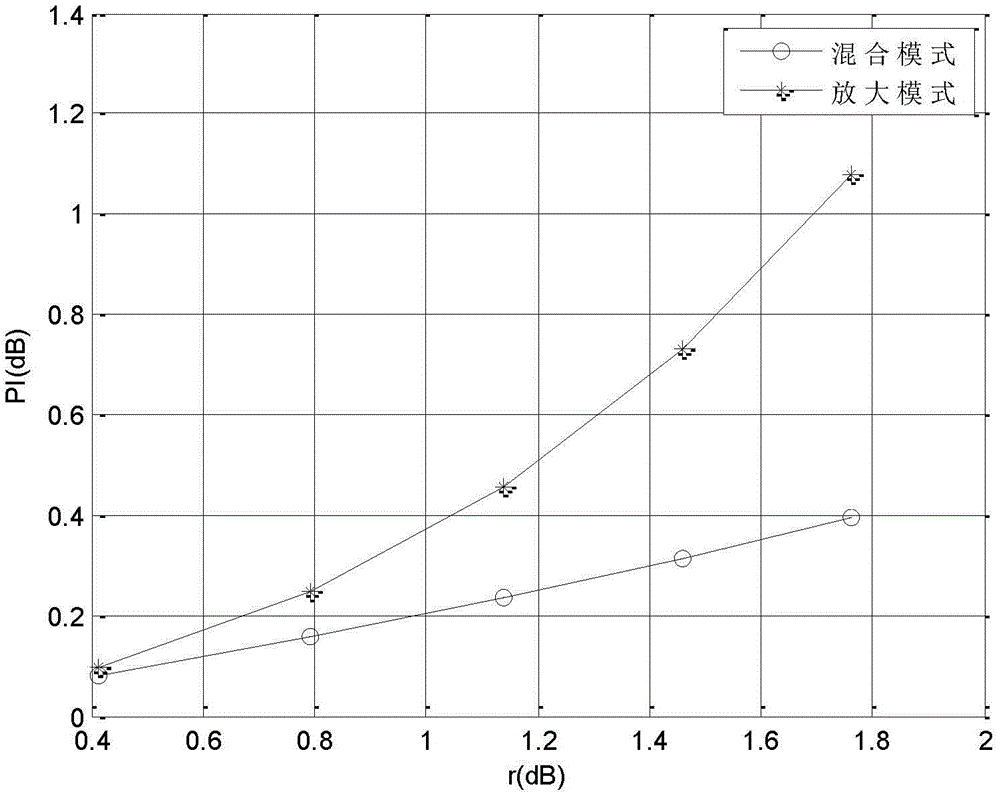Wave-beam forming method based on cognitive hybrid two-way relay
A beamforming, two-way relay technology, applied in space transmit diversity, radio transmission systems, network planning, etc., can solve problems such as amplifying noise, and achieve the effects of improving amplification, reducing interference, and improving system performance
- Summary
- Abstract
- Description
- Claims
- Application Information
AI Technical Summary
Problems solved by technology
Method used
Image
Examples
Embodiment Construction
[0023] Further set forth the present invention below in conjunction with accompanying drawing:
[0024] figure 1 It is a system model diagram of the present invention. The cognitive two-way relay network includes two secondary users (Su1, Su2) and a primary user pair (Pu-tx, Pu-rx). The two cognitive users exchange information through K relay nodes, and the primary user sends The end and the receiving end, the cognitive user and the relay node are all single-antenna. f m is the channel vector from the cognitive user to the relay, f m =[f m1 , f m2 ,... f mk ] Τ , m ∈ {1,2}. h 1 , h 2 represent the uplink channel vector and downlink channel vector between the primary user and the relay terminal respectively, h m =[h m1 ,h m2 ,...h mk ] T ,m∈{1,2}.
[0025] figure 2 It is an implementation flowchart of the beamforming design method based on the cognitive hybrid two-way relay system of the present invention. The implementation of the method includes the followi...
PUM
 Login to View More
Login to View More Abstract
Description
Claims
Application Information
 Login to View More
Login to View More - R&D
- Intellectual Property
- Life Sciences
- Materials
- Tech Scout
- Unparalleled Data Quality
- Higher Quality Content
- 60% Fewer Hallucinations
Browse by: Latest US Patents, China's latest patents, Technical Efficacy Thesaurus, Application Domain, Technology Topic, Popular Technical Reports.
© 2025 PatSnap. All rights reserved.Legal|Privacy policy|Modern Slavery Act Transparency Statement|Sitemap|About US| Contact US: help@patsnap.com



